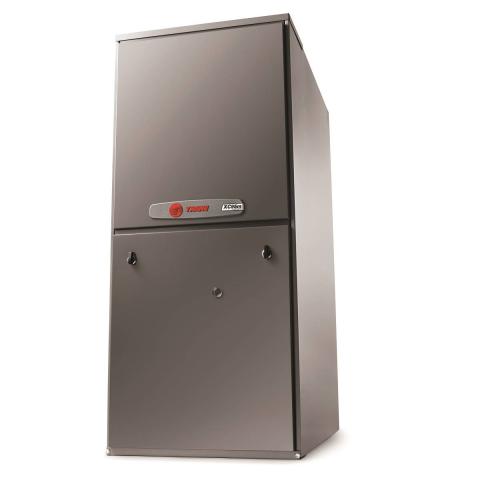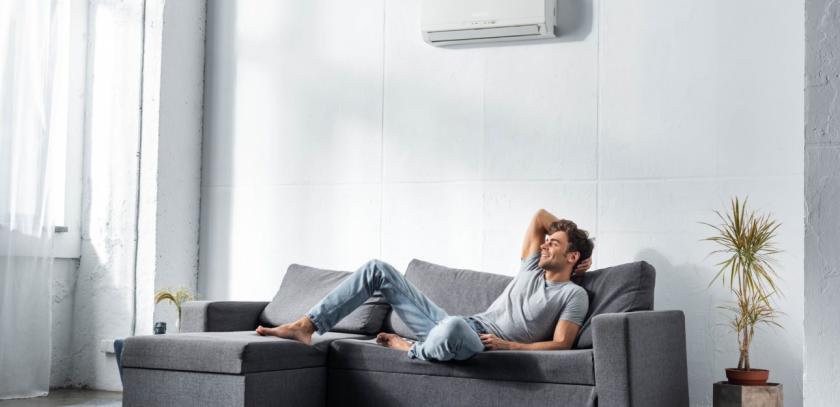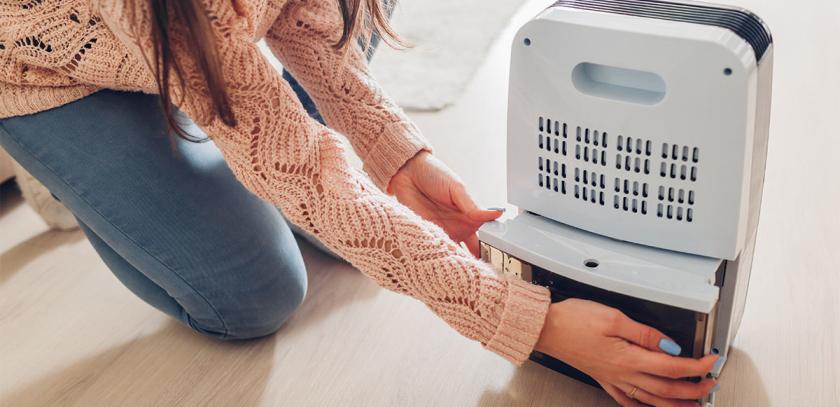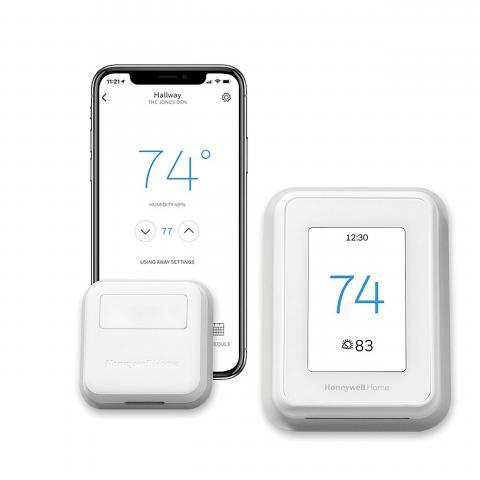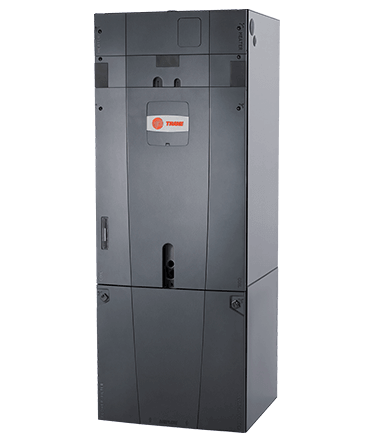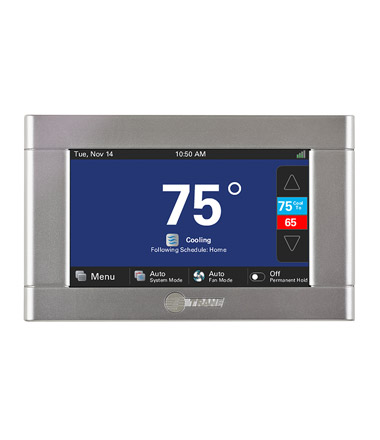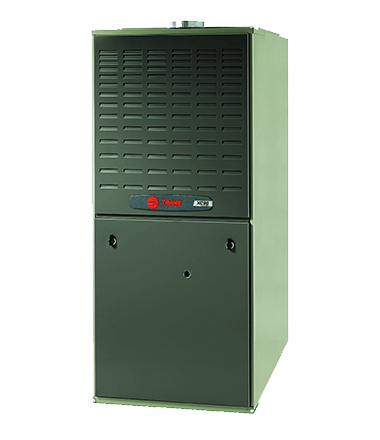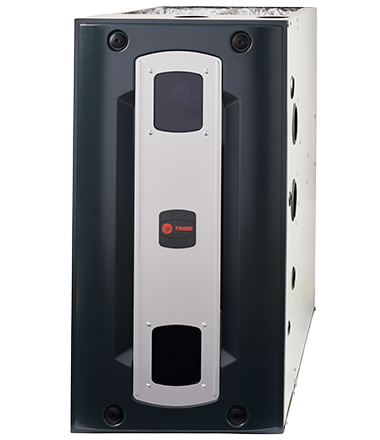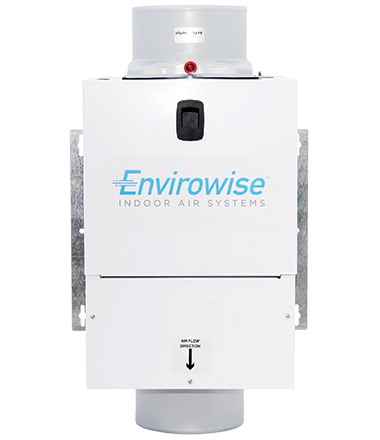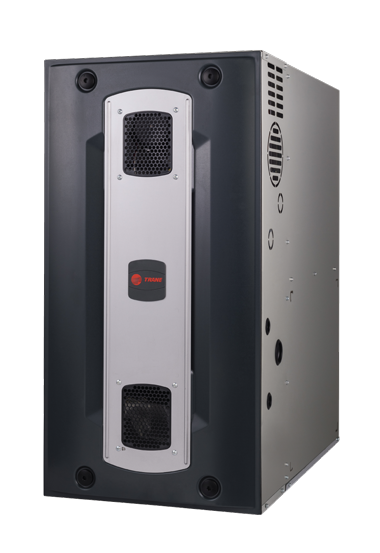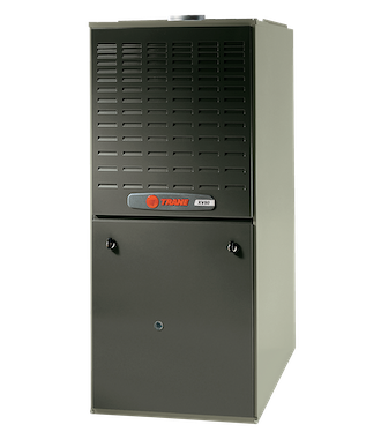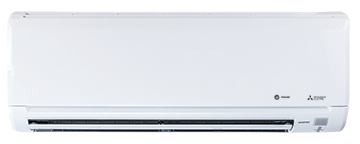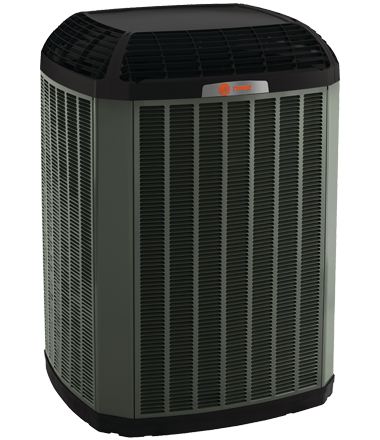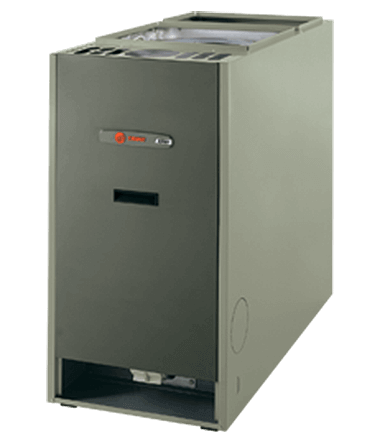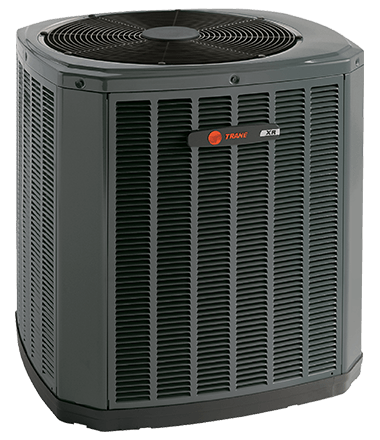FAQs
When replacing or upgrading an existing heating and cooling system from Summer Breeze Heating and Air Conditioning, it's important to first consider the limitations imposed by your current system and available energy sources. When selecting a heating and cooling system for a new house, your options are generally much wider, although your builder or developer may place limitations on your choices.
For both new and existing homes in, it's important to first maximize the energy efficiency of your home. This is the most cost-effective means of keeping your home comfortable, no matter what climate you live in. After doing so, be sure to do what you can to make use of passive solar heating in your home and consider whether ventilation can keep your house cool on warm days, or if you really need artificial cooling. Only after exploring these topics should you decide on the type of system you want and work with a contractor to figure out the optimum size for it.
Here are some further tips on choosing contractors:
- Ask neighbors and friends if they have worked with a contractor and if they would recommend Summer Breeze Heating and Air Conditioning.
- Focus on local companies like Summer Breeze Heating and Air Conditioning serving the Greater Atlanta area.
- Look for licensed, insured contractors like Summer Breeze Heating and Air Conditioning.
- Ask about previous experience with Summer Breeze Heating and Air Conditioning.
- Check references from Summer Breeze Heating and Air Conditioning.
- Inquire with the Better Business Bureau about Summer Breeze Heating and Air Conditioning.
Use these methods to select several contractors, then get at least three detailed, written bids. Each bid should include an agreement to provide written calculations (listing the procedures and standards that will be followed), equipment and installation warranties, a payment schedule, and a firm completion date. Avoid making your decision solely on the basis of price. The quality of the installation from Summer Breeze Heating and Air Conditioning should be your highest priority, because quality will determine energy cost, comfort, and durability.
A home energy assessment from Summer Breeze Heating and Air Conditioning serving the Greater Atlanta area, also known as a home energy audit, is the first step to assess how much energy your home consumes and to evaluate what measures you can take to make your home more energy efficient. An assessment will show you problems that may, when corrected, save you significant amounts of money over time.
During the assessment, you can pinpoint where your house is losing energy. Energy assessments also determine the efficiency of your home's heating and cooling systems. An assessment may also show you ways to conserve hot water and electricity. You can perform a simple energy assessment yourself, or have a professional energy auditor carry out a more thorough assessment.
A professional audit or uses a variety of techniques and equipment to determine the energy efficiency of a structure. Thorough assessments often use equipment such as blower doors, which measure the extent of leaks in the building envelope, and infrared cameras, which reveal hard-to-detect areas of air infiltration and missing insulation.
Although your first thought for cooling may be an air conditioning from Summer Breeze Heating & Air Conditioning for your home, there are many alternatives that provide cooling with less energy use. A combination of proper insulation, energy-efficient windows and doors, daylighting, shading, and ventilation will usually keep homes cool with a low amount of energy use in all but the hottest climates. Although ventilation should be avoided in hot, humid climates, the other approaches can significantly reduce the need to use air conditioning.
Ventilation
Whether relying on natural ventilation or forcing air through your home with fans, ventilation is the most energy-efficient way to cool your house.
Evaporative Cooling
For homes in dry climates, evaporative cooling or "swamp cooling" provides an experience like air conditioning, but with much lower energy use.
Air Conditioning
Air conditioners from Summer Breeze Heating & Air Conditioning range from a small room air conditioner to a large central air conditioning unit. Most air conditioners operate at less than their maximum efficiency, presenting energy-saving opportunities. New air conditioning units from Summer Breeze Heating and Air Conditioning serving the Greater Atlanta are far more efficient than earlier models.
Other Cooling Technologies Absorption coolers use heat rather than electricity as their energy source, and are now available for large homes. Radiant cooling can be appropriate in arid climates, but is problematic elsewhere.
A variety of technologies are available for heating your house from Summer Breeze Heating and Air Conditioning serving the Greater Atlanta area. In addition to heat pumps, which are discussed separately, many homes use the following approaches:
Furnaces and Boilers
Many homes are heated with either furnaces or boilers. Furnaces heat air and distribute the heated air through the house using ducts; boilers heat water, providing either hot water or steam for heating. Steam is distributed via pipes to steam radiators, and hot water can be distributed via baseboard radiators or radiant floor systems, or can heat air via a coil. Steam boilers operate at a higher temperature than hot water boilers, and are inherently less efficient, but high-efficiency versions of all types of furnaces and boilers are currently available.
Wood and Pellet-Fuel Heating
Before the 20th century, 90% of Americans burned wood to heat their homes. As fossil fuel use rose, the percentage of Americans using wood for fuel dropped, falling as low as one percent by 1970. Then during the energy crises of the 1970s, interest in wood heating resurfaced as a renewable energy alternative.
Newer on the scene are pellet fuel appliances, which burn small pellets that look like rabbit feed and measure 3/8 to 1 inch in length. Pellets are made from compacted sawdust, wood chips, bark, agricultural crop waste, waste paper, and other organic materials. Some pellet fuel appliances can burn a wide variety of biomass fuels, including nutshells, corn kernels, small wood chips, barley, beet pulp, sunflowers, dried cherry pits, and soybeans.
Electric Resistance Heating
Electric resistance heating converts nearly 100% of the energy in the electricity to heat. However, most electricity is produced from oil, gas, or coal generators that convert only about 30% of the fuel's energy into electricity. Because of electricity generation and transmission losses, electric heat is often more expensive than heat produced in the home or business using combustion appliances, such as natural gas, propane, and oil furnaces.
Active Solar Heating
There are two basic types of active solar heating systems based on the type of fluid—either liquid or air—that is heated in the solar energy collectors. (The collector is the device in which a fluid is heated by the sun.) Liquid-based systems heat water or an antifreeze solution in a "hydronic" collector, whereas air-based systems heat air in an "air collector."
Radiant Heating Radiant
Heating systems involve supplying heat directly to the floor or to panels in the wall or ceiling of a house. The systems depend largely on radiant heat transfer: the delivery of heat directly from the hot surface to the people and objects in the room via the radiation of heat, which is also called infrared radiation. Radiant heating is the effect you feel when you can feel the warmth of a hot stovetop element from across the room. When radiant heating is located in the floor, it is often called radiant floor heating or simply floor heating.
Small Space Heaters
Small space heaters are typically used when the main heating system is inadequate or when central heating is too costly to install or operate. In some cases, small space heaters can be less expensive to use if you only want to heat one room or supplement inadequate heating in one room. They can also boost the temperature of rooms used by individuals who are sensitive to cold, especially elderly persons, without overheating your entire home.
Heat Distribution Systems
Heat is distributed through your home through a variety of ways. Forced-air systems use ducts, and since these are also used for central air conditioning and for heat pump systems. Likewise, unique heat distribution systems are employed for radiant heating and are discussed in that section. That leaves two systems that apply broadly to heating systems: steam radiators and hot water radiators.
New Thermostats and ducts fromSummer Breeze Heating & Air Conditioning provide opportunities for saving energy. Dehumidifying heat pipes provide a way to help central air conditioners and heat pumps dehumidify air. Electric and gas meters allow you to track your energy use closely.
Thermostats
You can save around 10% a year on your heating and cooling bills by simply turning your thermostat back 10°–15° for eight hours. You can do this automatically without sacrificing comfort by installing an automatic setback or programmable thermostat. A programmable thermostat from Summer Breeze Heating & Air Conditioning offers a lot of flexibility in its temperature settings.
Using a programmable thermostat from Summer Breeze Heating & Air Conditioning, you can adjust the times you turn on the heating or air-conditioning according to a pre-set schedule. As a result, you don't operate the equipment as much when you are asleep or when the house is not occupied.
Programmable thermostats from Summer Breeze Heating & Air Conditioning can store and repeat multiple daily settings (six or more temperature settings a day) that you can manually override without affecting the rest of the daily or weekly program.
Ducts
In new home construction or in retrofits, proper duct system design is critical. In recent years, energy-saving designs have sought to include ducts and heating systems in the conditioned space.
Many existing duct systems lose a lot of energy from leakage and poor insulation. Existing ducts may also be blocked or may require simple upgrades.
Dehumidifying Heat Pipes
In order to make a room comfortable in hot, humid climates, an air conditioner must lower the indoor humidity level as well as the air temperature. If an air conditioner fails to lower the humidity adequately, the air will be cool, but will feel uncomfortably damp. Inappropriately sized air conditioners are prone to this problem; large units quickly cool the air, but cycle off before they can properly dehumidify it. In extremely humid climates, even correctly sized air conditioning equipment could fail to maintain a home at a comfortable humidity level. Gas and Electric Meters You can read your own meters to help monitor your electric or gas energy use. During the heating season, your energy use should be compared to the number of heating degree days for the same time period; during the cooling season, compare your energy use to the number of cooling degree days.
In an existing home, it's important to consider the impacts of replacing your current heating system with a different type of heating system from Summer Breeze Heating and Air Conditioning serving the Greater Atlanta area. The easiest route is simply to replace your furnace or boiler from Summer Breeze Heating & Air Conditioning with an updated model of the same type, but this may keep you from your most efficient heating and cooling options. Here's what you need to consider in the following situations:
- Switching Electric Resistance or Steam Heating to Hot Water Heating from Summer Breeze Heating & Air Conditioning
- Switching Among Ducted Heating and Cooling Systems from Summer Breeze Heating & Air Conditioning
- Adding Ducts to your Home
- Switching Electric Resistance or Steam Heating to Hot Water Heating
Electric resistance heating, also called electric baseboard heating, is the cheapest to install and the most expensive to operate, as it is the least efficient source of heat. Unfortunately, upgrading to ducted systems, as discussed below, will involve a significant expense for ducting. Another option is to switch to a hot water baseboard system. Baseboard heaters can probably replace electric resistance baseboards in the same location, but will still require extensive plumbing. Steam systems are generally less efficient than hot water heating systems, but the efficiency gain of upgrading to hot water is probably not worth the expense; it would be better instead to upgrade or replace your boiler. However, it is sometimes possible to convert existing steam distribution pipes to hot water heating, which reduces the cost of the system to the cost of the boiler, the baseboard heaters, and the installation labor. This is generally only feasible in newer two-pipe steam systems (that is, systems in which two pipes go to each radiator, one for the steam and one for the condensate return). For some homeowners, the aesthetic and space-saving benefits of eliminating the large steam radiators may be worth the expense.
Switching Among Ducted Heating and Cooling Systems
If you currently own a forced-air heating system in from Summer Breeze Heating & Air Conditioning, you may wish to add central air conditioning (if you don't have it already) or switch to a heat pump system. Adding central air conditioning Air Conditioning is fairly simple, but be sure you match the system to your existing ductwork. Switching to a heat pump system could be problematic, since heat pumps generally require larger ducts. However, many heating systems are oversized, particularly if your home is well insulated. It may be feasible to upgrade the energy efficiency of your home (if it hasn't been upgraded already) and convert to a smaller-capacity heat pump that is matched to your existing ductwork. To evaluate this option, consult a heating and cooling professional.
Heat pumps are among the most efficient sources of heating and cooling, but in areas with high electricity costs, they may still be more expensive than other options. Switching from a heat pump system to a furnace system (possibly with a central air conditioner) is feasible but probably not cost effective. However, if you wish to do so, the ducts should have no problem accommodating the new system, assuming it is sized correctly.
Adding Ducts to your Home
Many homes in that use steam or hot water heating, radiant heating, or electric resistance heating (or have no heating at all) do not have ducts. Homeowners may want to add ducts to their homes for a number of reasons, but the most common reason is to provide central air conditioning. If that's your only reason for wanting to add ducts, consider instead adding a ductless mini-split air conditioner or ductless mini-split heat pump.
If you are considering switching from your current system to a ducted system from Summer Breeze Heating & Air Conditioning simply to upgrade your heating system's efficiency, it probably is not worth it, except perhaps for electric resistance heating. Instead, you should look into upgrades to your existing system (see the heating section for more information). For steam systems and electric resistance heating, consider switching to hot water baseboard heating, as discussed below.
Adding ducts to an existing home can be a difficult proposition. In a single-story ranch home with an unfinished basement or crawl space, the ducts could be located underneath the main living space, and nearly any ranch home could accommodate ducts in the attic space. In Gwinnett homes with high ceilings, it may be possible to hide the ducts in a dropped ceiling. In all cases, DOE's Building America program recommends that the ducts be located within the home's conditioned space, even if that means extending to conditioned space into the crawlspace or the attic. See the section on ducts for more information.
In multi-level located homes, or single-story homes with finished basements and attics, the logistics of adding standard ducts are nearly insurmountable, unless you plan to largely gut the home as part of a remodel. Fortunately, there is an alternative: several companies like Summer Breeze Heating & Air Conditioning now offer "mini-duct" air distribution systems that force air through plastic feeder ducts that are only 2 inches in diameter. These ducts can be easily threaded through cavities in walls, floors, and ceilings.
A downside with mini-ducts is that they general require more outlets: roughly 5 outlets per ton of cooling, or one outlet for every 2400 BTUs of heating. This will likely result in higher costs to install the system. The Air Conditioning and Refrigeration Institute (ARI) certifies high velocity air distribution systems for use with numerous heat pumps, air conditioners, and heat sources.
If you add ducts to your existing home, the question is whether to continue using your existing heating system or to install a new forced-air heating system. For homes using electric resistance heating, adding either a furnace or heat pump is clearly preferable. With steam, hot water, or radiant heat, the decision is less obvious: it really depends on how efficient your current system is, how efficient the new system would be in the heating mode, and the cost difference between installing just a central air conditioner versus installing both a heating and cooling system. A heating and cooling professional like Summer Breeze Heating & Air Conditioning should be able to help you evaluate these options.
Note that changing to a forced-air system has its pluses and minuses. On the plus side, not only does it allow for central air conditioning, but the furnace could be much more efficient than your current heating system. On the negative side, the fan for the forced air system could increase your use of electricity significantly. This may be an important consideration in areas with high electricity prices.
Selecting the fuel and heating system best suited for your needs depends on the following factors:
• The cost and availability of the fuel or energy source
• The type of appliance used to convert that fuel to heat and how the heat is distributed in your house
• The cost to purchase, install, and maintain the heating appliance
• The heating appliance's and heat delivery system's efficiency
• The environmental impacts associated with the heating fuel
Fuel Availability
The simple view of heating fuels is that most homeowners are relatively limited in their options for heating fuels. In the Northeast, the choices are largely fuel oil or electricity, although natural gas is becoming available to more homes. For people in rural areas, heating fuels may be limited to propane and wood. People in most of the rest of the country have natural gas and electricity as their main choices.
In reality, the situation is more complex than that. First of all, solar energy is available throughout the country, and new homes in cold or moderate climates should be designed to take advantage of passive solar heating. Active solar heating systems can be used as a supplemental heating source in new or existing homes and are compatible with most heating and systems. Homeowners can use either solar air heating devices for preheating of ventilation air or solar water heating devices to supplement hot water heating systems. Solar energy can also be used to boost the performance of heat pumps, and an absorption heat pump will actually allow you to power an air conditioning system with solar energy.
n addition, pellet fuels—generally made from recycled wood waste—are available nationwide. These fuels may be available at competitive prices. Wood is also available in most parts of the country, although of course it is most cost-effective if you can harvest it for free (note that even "free" firewood requires expenses for hauling it, so it may be more expensive than you think). Propane is also available throughout the country.
Fuel Costs
One somewhat simple way to evaluate heating options is to compare the cost of the fuel. To do that, you have to know the energy content of the fuel and the efficiency by which it is converted to useful heat.
Fuels are measured in physical units, such as gallons of oil or propane, cubic feet of natural gas, or kilowatt hours of electricity (kWh). They are also measured by heat content. In the United States, the most commonly used value for expressing the energy value or heat content of a fuel is the British thermal unit (Btu). One Btu is the amount of energy needed to raise the temperature of one pound of water 1°F, when water is at about 39°F. One "therm" is 100,000 Btu.
The table below provides a list of typical heating fuels and the Btu content in the units that they are typically sold in the United States. The figures below are general references for residential heating applications only. Commercial and industrial users should obtain more precise values from their fuel vendors.
You can easily conduct a do-it-yourself home energy assessment (also known as a home energy audit). With a simple but diligent walk-through, you can spot many problems in any type of house. When assessing your home, keep a checklist of areas you have inspected and problems you found. This list will help you prioritize your energy efficiency upgrades.
Locating Air Leaks in your home
First, make a list of obvious air leaks (drafts). The potential energy savings from reducing drafts in a home may range from 5% to 30% per year, and the home is generally much more comfortable afterward. Check for indoor air leaks, such as gaps along the baseboard or edge of the flooring and at junctures of the walls and ceiling. Check to see if air can flow through these places:
- Electrical outlets
- Switch plates
- Window frames
- Baseboards
- Weather stripping around doors
- Fireplace dampers
- Attic hatches
Wall or window-mounted air conditioners
Also look for gaps around pipes and wires, electrical outlets, foundation seals, and mail slots. Check to see if the caulking and weather stripping are applied properly, leaving no gaps or cracks, and are in good condition.
Inspect windows and doors for air leaks. See if you can rattle them, since movement means possible air leaks. If you can see daylight around a door or window frame, then the door or window leaks. You can usually seal these leaks by caulking or weather stripping them. Check the storm windows to see if they fit and are not broken. You may also wish to consider replacing your old windows and doors with newer, high-performance ones. If new factory-made doors or windows are too costly, you can install low-cost plastic sheets over the windows.
If you are having difficulty locating leaks, you may want to conduct a basic building pressurization test:
First, close all exterior doors, windows, and fireplace flues. Turn off all combustion appliances such as gas burning furnaces and water heaters. Then turn on all exhaust fans (generally located in the kitchen and bathrooms) or use a large window fan to suck the air out of the rooms.
This test increases infiltration through cracks and leaks, making them easier to detect. You can use incense sticks or your damp hand to locate these leaks. If you use incense sticks, moving air will cause the smoke to waver, and if you use your damp hand, any drafts will feel cool to your hand.
On the outside of your house, inspect all areas where two different building materials meet, including:
- All exterior corners
- Where siding and chimneys meet
- Areas where the foundation and the bottom of exterior brick or siding meet.
- You should plug and caulk holes or penetrations for faucets, pipes, electric outlets, and wiring.
- Look for cracks and holes in the mortar, foundation, and siding, and seal them with the appropriate material.
Check the exterior caulking around doors and windows, and see whether exterior storm doors and primary doors seal tightly.
When sealing any home, you must always be aware of the danger of indoor air pollution and combustion appliance "backdrafts." Backdrafting is when the various combustion appliances and exhaust fans in the home compete for air. An exhaust fan may pull the combustion gases back into the living space. This can obviously create a very dangerous and unhealthy situation in the home.
In homes where a fuel is burned (i.e., natural gas, fuel oil, propane, or wood) for heating, be certain the appliance has an adequate air supply. Generally, one square inch of vent opening is required for each 1,000 Btu of appliance input heat. When in doubt, contact your local utility company, energy professional, or ventilation contractor.
Insulation
Heat loss through the ceiling and walls in your home could be very large if the insulation levels are less than the recommended minimum. When your house was built, the builder likely installed the amount of insulation recommended at that time. Given today's energy prices (and future prices that will probably be higher), the level of insulation might be inadequate, especially if you have an older home.
If the attic hatch is located above a conditioned space, check to see if it is at least as heavily insulated as the attic, is weather stripped, and closes tightly. In the attic, determine whether openings for items such as pipes, ductwork, and chimneys are sealed. Seal any gaps with an expanding foam caulk or some other permanent sealant.
While you are inspecting the attic, check to see if there is a vapor barrier under the attic insulation. The vapor barrier might be tarpaper, Kraft paper attached to fiberglass batts, or a plastic sheet. If there does not appear to be a vapor barrier, you might consider painting the interior ceilings with vapor barrier paint. This reduces the amount of water vapor that can pass through the ceiling. Large amounts of moisture can reduce the effectiveness of insulation and promote structural damage.
Make sure that the attic vents are not blocked by insulation. You also should seal any electrical boxes in the ceiling with flexible caulk (from the living room side or attic side) and cover the entire attic floor with at least the current recommended amount of insulation.
Checking a wall's insulation level is more difficult. Select an exterior wall and turn off the circuit breaker or unscrew the fuse for any outlets in the wall. Be sure to test the outlets to make certain that they are not "hot." Check the outlet by plugging in a functioning lamp or portable radio. Once you are sure your outlets are not getting any electricity, remove the cover plate from one of the outlets and gently probe into the wall with a thin, long stick or screwdriver. If you encounter a slight resistance, you have some insulation there. You could also make a small hole in a closet, behind a couch, or in some other unobtrusive place to see what, if anything, the wall cavity is filled with. Ideally, the wall cavity should be totally filled with some form of insulation material. Unfortunately, this method cannot tell you if the entire wall is insulated, or if the insulation has settled. Only a thermographic inspection can do this.
If your basement is unheated, determine whether there is insulation under the living area flooring. In most areas of the country, an R-value of 25 is the recommended minimum level of insulation. The insulation at the top of the foundation wall and first floor perimeter should have an R-value of 19 or greater. If the basement is heated, the foundation walls should be insulated to at least R-19. Your water heater, hot water pipes, and furnace ducts should all be insulated.
Heating/Cooling Equipment
Inspect heating and cooling equipment from Summer Breeze Heating & Air Conditioning annually, or as recommended by the manufacturer. If you have a forced-air furnace, check your filters and replace them as needed. Generally, you should change them about once every month or two, especially "...If the unit is more than 15 years old, you should consider replacing your system" during periods of high usage. Have a professional from Summer Breeze Heating & Air Conditioning check and clean your equipment once a year. If the unit is more than 15 years old, you should consider replacing your system with one of the newer, energy-efficient unit from Summer Breeze Heating & Air Conditioning. A new unit would greatly reduce your energy consumption, especially if the existing equipment is in poor condition. Check your ductwork for dirt streaks, especially near seams. These indicate air leaks, and they should be sealed with a duct mastic. Insulate any ducts or pipes that travel through unheated spaces. An insulation R-Value of 6 is the recommended minimum. Lighting Energy for lighting accounts for about 10% of your electric bill. Examine the wattage size of the light bulbs in your house. You may have 100-watt (or larger) bulbs where 60 or 75 watts would do. You should also consider compact fluorescent lamps for areas where lights are on for hours at a time. Your electric utility may offer rebates or other incentives for purchasing energy-efficient lamps.



